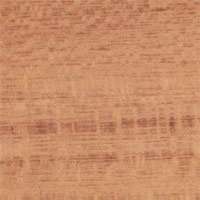
Akoiyi (Cordia africana)
Family: Boraginaceae
Common names: Akoiyi, Aliliba, Alilliba, Aluba, Chichikiri, East Africa cordia, Inderab, Khinghobe, Large leaved cordia, Lilibani, Mringaringa, Mtadola, Mugengere, Mugunguret, Mujugangoma, Mukebu, Mukumari, Mukumasi, Muringa, Muringaringa, Musingati, Musizio, Mutumba, Muzugangoma, Omujugangoma, Samotet, Samut
Distributed in: Ethiopia, Guinea, Kenya, Sudan, Tanzania, Uganda, Zimbabwe (Africa)
Common uses: Beehives, Boat building (general), Boat building: decking, Boxes and crates, Cabinetmaking, Carvings, Food containers, Furniture, Joinery, Light construction, Matches, Mathematical instruments, Moldings, Musical instruments, Musical instruments: percussion, Paneling, Particleboard, Plywood corestock, Plywood, Pulp/Paper products, Shingles, Tool handles, Toys, Turnery, Vats, Vehicle parts, Veneer, Veneer: decorative
Tree size: Trunk diameter is 100-150 cm
Colors: the heart isReddish brown, Yellowand the sapwoodWhite to yellow, Yellow.The grain isWavy, the textureMedium to coarseand the lusterMedium
Natural durability: Susceptible to attack from termites (Isoptera), Very durable
Kiln Drying Rate: Naturally dries quickly
Drying Defects: Slight end splitting, Slight twist/warp
Ease of Drying: Reconditioning Treatement
Tree Identification: Bole/stem form is misshapen
Blunting Effect: Little
Boring: Fairly easy to very easy
Cutting Resistance: Moderate to saw
Gluing: Fair to Good Results
Mortising: Fairly Easy to Very Easy
Moulding: Good finishing
Movement in Service: Good finishing
Nailing: Holds nails well, Very Good to Excellent
Planing: Planes well, to a good finish
Resistance to Impregnation: Resistant sapwood
Response to hand tools: Responds Readily
Routing recessing: Fair to Good Results
Veneering qualities: Suitable for slicing, Suitable for slicing
Steam bending: Poor to Very Poor Results
Screwing: Satisfactory results, Very Good to Excellent Results; Turning: Fair to Good Results
Polishing: Surface Preparation; Staining: Surface Preparation; Varnishing: Good;
- Numerical data Metric
- Numerical data English
- Strength properties
- References
 |
 |
 |
 |
| Item |
Green |
Dry |
Metric |
| Specific Gravity |
|
|
|
| Density |
|
464 |
kg/m3 |
| Bending Strength |
474 |
744 |
kg/cm2 |
| Crushing Strength |
250 |
414 |
kg/cm2 |
| Hardness |
|
451 |
kg |
| Impact Strength |
|
|
cm |
| Shearing Strength |
|
|
kg/cm2 |
| Stiffness |
|
|
1000 kg/cm2 |
| Tangential Shrinkage |
|
|
% |
| Radial Shrinkage |
4 |
|
% |
| Weight |
448 |
400 |
kg/m3 |
| Maximum Load |
|
|
cm-kg/cm3 |
| Toughness |
|
|
cm-kg |
| Static Bending |
|
|
kg/cm2 |
|
 |  |  |  | | Item | Green | Dry | English | | Bending Strength | 6751 | 10584 | psi | | Density | | 29 | lbs/ft3 | | Hardness | | 995 | lbs | | Maximum Crushing Strength | 3560 | 5901 | psi | | Weight | 28 | 25 | lbs/ft3 | | Radial Shrinkage | 4 | | % | | Tangential Shrinkage | 7 | | % | |
Density (dry weight) = 23-30 lbs/cu. ft. 1
Density (dry weight) = 31-37 lbs/cu. ft.
Max. crushing strength = medium
Hardness (side grain) = soft
Bending strength (MOR) = low
Shrinkage, Tangential = small
Density (dry weight) = 38-45 lbs/cu. ft.
Shrinkage, Tangential = very small
Shrinkage, Tangential = moderate
Shrinkage, Tangential = large
Shrinkage, Tangential = fairly large
Shrinkage, Radial = very small
Shrinkage, Radial = small
Shrinkage, Radial = moderate
Shrinkage, Radial = large
Shrinkage, Radial = fairly large
Max. crushing strength = low
Bending strength (MOR) = medium
Battiscombe, E., Dale, I.R.,1936,Trees and Shrubs of Kenya Colony,Govt. Printer NairobiBolza, E., Keating, W.G.,1972,African Timbers - the Properties, Uses and Characteristics of 700 Species,C.S.I.R.O. Div. of Building ResearchBrehme, K.,1966,Timbers of Ethiopia No.7 East African Cordia (Cordia africana,Ethiopia Forest Research Institute, Haile Sellassie University, Addis,AbabaBryce, J.M.,1967,Commercial Timbers of Tanzania,Tanzanian Forestry Division Util. Sec. MoshiEggeling, W.J.,1940,Indigenous Trees of Uganda,Govt. Printer Entebbe UgandaGoldsmith, B., Carter, D.T.,1981,The Indigenous Timbers of Zimbabwe,Forestry Commission, Zimbabwe Research Bulletin No.9Grant, D.K.S.,1934,Some Local Timbers,Tanzania Forest DepartmentHoward, A.L.,1948,A Manual of Timbers of the World.,Macmillan & Co. Ltd. London 3rd ed.Irvine, F.R.,1961,Woody Plants of Ghana,O.U.P. LondonKeay, R.W.J.,1964,Nigerian Trees Vol.2,Nigeria Federal Department of Forest Research, IbadanKloot, N.H., Bolza, E.,1961,Properties of Timbers Imported into Australia,C.S.I.R.O. Forest Products Division Technological Paper,No.12Murira, K.,1984,Natural Durability Tests of Tanzanian Timbers 1955 - 1982,Tanzania Forestry Research Institute, Timber Utilisation Research Centre,,Moshi.Patterson, D.N.,1963,The strength of Kenya timbers, their derivation and application,Kenya Forestry Department Research Bulletin,No.23Tack, C.H.,1953,Plywood and veneer species,Forest Department, Uganda. Technical Note 5/1953Tack, C.H.,1969,Uganda Timbers,Govt. Printer UgandaTakahashi, A.,1978,Compilation of Data on the Mechanical Properties of Foreign Woods (Part,III) Africa,Shimane University, Japan, Research Report on Foreign Wood No. 7Timber Development Association,1948,Some New Timbers and Their Uses No. 34,Timber Development Association Limited, London [TRADA]White, F.,1962,Forest Flora of Northern Rhodesia,O.U.P. LondonWimbush, S.H.,1950,Catalogue of Kenya Timbers,Govt. Printer Nairobi Kenya
|








